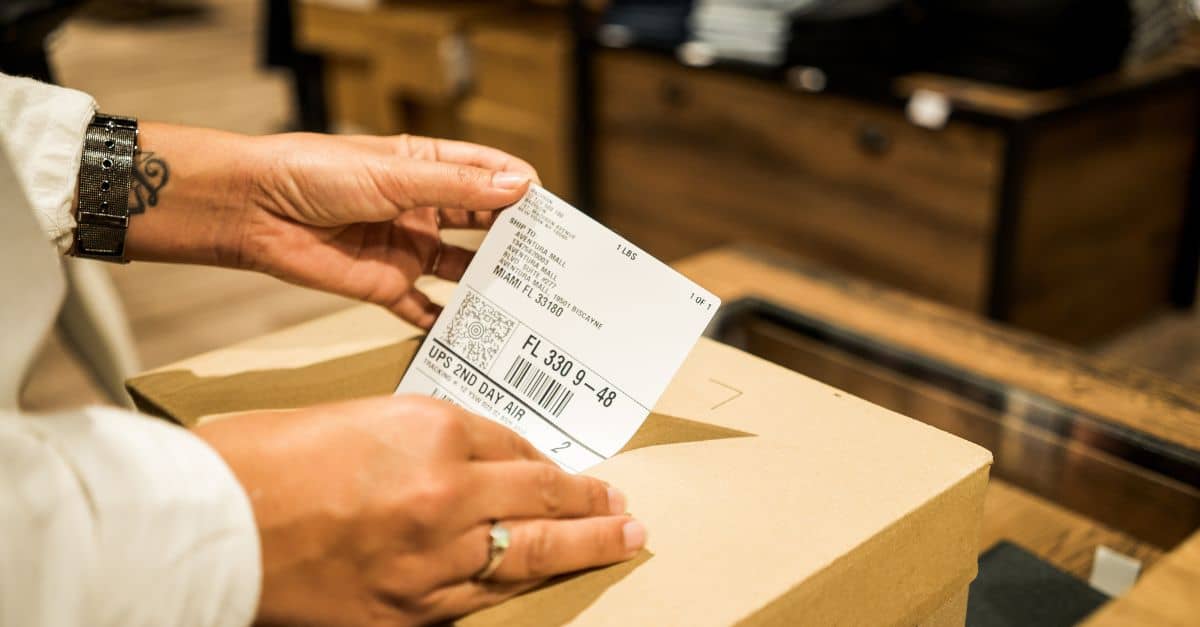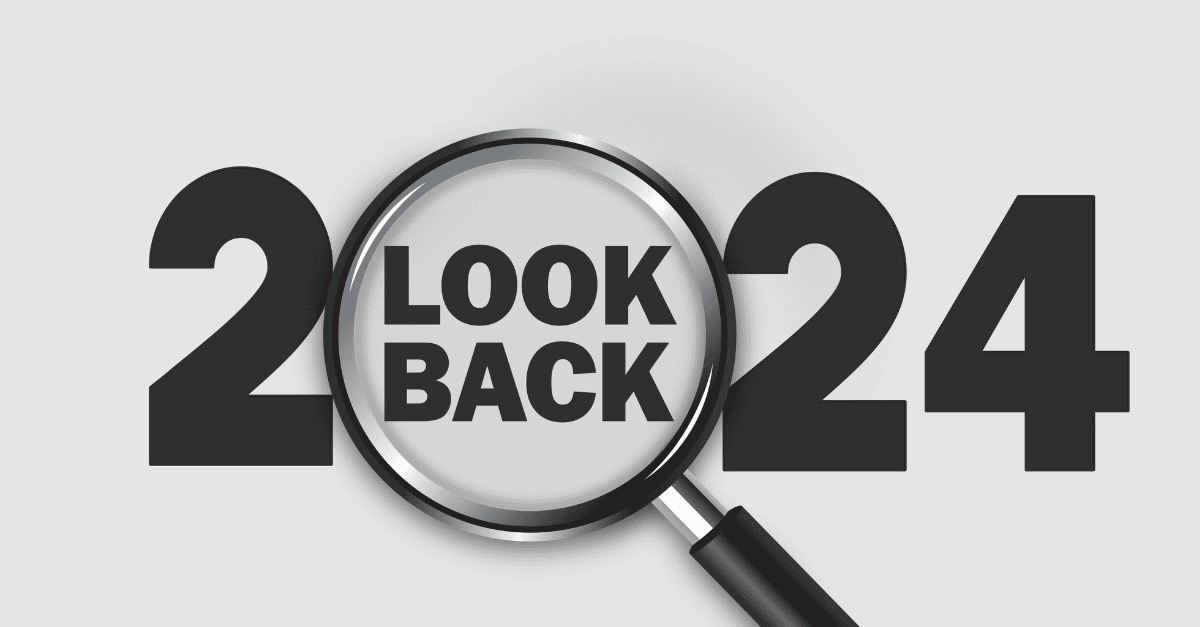
Ship from Store: definition, advantages, disadvantages, main suppliers in Europe & practical advice
Table
Introduction to Ship from Store
Definition
Advantages
Necessary prerequisites
Main obstacles
Key OMS and Ship from Store suppliers in Europe
Build or buy: developing a Ship from Store solution in-house
Choosing a service provider
Tips for a successful Ship from Store project
Introduction to Ship from Store
Ship from Store is an omnichannel service that has become increasingly popular with retailers in recent years.
The IHL Group published a study in November 2022 stating that the OMS SaaS market (which is the technology base for launching a Ship from Store solution) will grow from $570.7 million in 2021 to $2.16 billion in 2026 – or 278% in 5 years.
The benefits of Ship from Store are tangible and quickly apparent. The disadvantages are easily addressed with minimum reorganisation. That said, there are still many questions about this service: is it profitable? Will the field teams have the time to manage this additional work? How do you choose a Ship from Store solution?
One thing is certain: the road is paved. More and more retailers are integrating an OMS in order to remain competitive in the face of new consumer demands. Today, it is difficult for any retailer to keep pace with customers, retail competitors and pure players without the technology and logistics provided by inventory consolidation and order orchestration software.
In this article, we will analyse Ship from Store, combining introductory information with expert insights.
This article was written by OneStock, the European leader in OMS and Ship from Store. The analysis, data and insights are based on the field experience of our teams.
Definition
Ship from Store is a service that consists of sending an order from one of a retailer’s physical outlets.
Whereas previously all orders placed online were handled by a warehouse that was required to have all of a brand’s products in stock, involving stores in order processing is a popular omnichannel solution for retailers today.
Amongst other omnichannel services such as Click and Collect or Order in Store, Ship from Store stands out by transforming the point of sale into a real order fulfilment centre.

Advantages
The reason this solution has been quickly adopted by retailers today is because it offers undeniable advantages.
On average, retailers experience an increase of 25% to 30% in online sales. This increase can be explained as follows:
- Increase in the average basket size (20%)
- Increase in conversion rates
– Previously, customers did not complete the sale because they could not find the item they were looking for online, or
– Customers did not complete the sale due to long delivery times. According to a SendCloud study, 44% of abandoned shopping carts are due to long delivery times. Ship from Store contributes to a clear reduction in cart abandonment by enabling faster delivery from local stores.
We have developed a technology capable of identifying the unavailability rate of any e-commerce site by crawling all pages on site.
The average unavailability rate before the implementation of OneStock is 30%. How will yours compare?
- No more out-of-stock items: An item that is unavailable in the warehouse will now be shipped from a store’s stock. Thanks to this process, the website always displays available items and greatly limits missed purchases. Customers are no longer faced with out-of-stock items, an experience that tends to damage your brand image. More choice also means more customer loyalty, so customers no longer go looking for their item in another store. Thus, the conversion rate increases.
- Better stock clearance: This point is related to the previous one. Being able to offer an item from any point of sale means that stock can be sold through more quickly. More items are therefore sold at full price and no longer need to be discounted during sales, and the number of unsold items is minimised at the end of the season.
- Controlled transport: The choice of store to take charge of each order has a direct impact on the cost of transporting goods. A shipping point close to the end customer allows for a shorter delivery time. In addition, since the journeys are shorter, they are less expensive, for your business but also for the planet, as the carbon footprint for the order is reduced. And don’t forget that waiting time affects the decision to buy, so fast delivery also helps to improve sales.
- A more engaged sales team: Managing online orders in-store makes it easier for retail teams to reach their sales targets. They are therefore motivated to fill orders, especially when implementing competitive order allocation, where a first come, first served rule stimulates positive competition between stores and engages employees (see the ‘Choosing a Ship from Store provider’ section below for more on this concept).
- Keeping the sales team busy: During periods of low foot traffic in-store, Ship from Store ensures that sales staff are always productive.
For the customers of retailers offering Ship from Store, the benefits are also manifold:
- A larger online catalogue: A customer visiting the online store benefits from an enhanced shopping experience thanks to an extended product catalogue. In addition to the appearance of items that were not previously offered, higher stock quantities minimise disappointment caused by stock-outs.
- Shorter delivery times: As mentioned earlier, Ship from Store allows for faster delivery times. Customers want to receive their parcels as soon as possible, even on the same day, so the fact that the order leaves from a store located in the city centre rather than a warehouse located on the outskirts of the city increases customer satisfaction as they receive their parcel quickly.
- Reduced environmental impact: Shoppers are now asking companies to take ecological measures for the future and to help them consume more responsibly. A company that has a reduced carbon footprint thanks to more eco-friendly delivery options reassures customers and builds loyalty by making them feel that ordering from your company means ordering in accordance with their values.
Ship from Store is a solution adopted by businesses seeking efficiency. While it has many advantages, a few prerequisites are necessary for its implementation.
Prerequisites
Prerequisite 1: an effective e-commerce site and several points of sale
Growing a business does not happen overnight, and it is important not to skip any steps. Having an e-commerce site in addition to an already installed and functional sales network are the mandatory conditions before thinking about Ship from Store.
We do not advise retailers who have an e-commerce site generating less than €1.5 million in turnover and who do not have at least ten physical points of sale in the territory to launch Ship from Store, as the expected benefits (which can be calculated as a percentage of e-commerce turnover) will be lower than the costs of implementation and project monitoring.
Prerequisite 2: OMS and stock unification
Ship from Store is based on an important prerequisite: the retailer must have a “unified” view of its stock.
Stock unification consists of accounting for all of a company’s stock in a single theoretical stock pool. Whether the products are in the warehouse, in a store or with a supplier, unifying your stock gives you a global view of it. The Order Management System (OMS) is the most common tool used the enable this unified view.
An OMS also takes care of order orchestration, i.e. deciding which stock point to send an order to in order to manage it as efficiently as possible. With an OMS, managing orders and returns becomes easier, with or without a Ship from Store service. Communication between all parties involved in a delivery (warehouse, shop, carrier, supplier) is more fluid.
Disadvantages and main obstacles
While there are many advantages, with real results, there are also some disadvantages. While some of these might be obvious, others are less so.
Yes, the cost of delivery per order is bound to increase
Each retailer has different picking and delivery costs, depending on the volumes and types of products sold. In a national territory, sending an order from a central stock point (such as a warehouse) generally costs between €2–5, while sending it from a store costs between €7–10. The value of implementing Ship from Store is therefore proportional to the value of the average basket on your e-commerce site.
Some retailers will wonder why they would consider losing their €5 margin per order, but end up understanding the interest of Ship from Store by analysing the positive impacts of such a solution:
- Increase in sales volume
- Increase in average basket value
- Faster stock clearance and rotation
- Reduction in the number of out-of-stock products
- Reduction in unsold goods at the end of the season
It is difficult to give exact figures. The data may vary according to the type of product, the size of a company or the specificities of each retailer.
However, in general terms, Ship from Store is a positive ROI solution after only 6-8 months of deployment.
OneStock’s experts can help retailers define a unique business plan for this solution, so please contact us.
Yes, there will be changes on the point of sale side but it is not insurmountable
With the implementation of Ship from Store, the shop space and its operation is transformed. The available space must be adapted to make shipping from store possible. A dedicated area for the preparation of parcels is necessary so that picking and packing can be done efficiently.
Launching a Ship from Store service will also require store teams to undertake training sessions, which may initially put some people off. However, once they have learnt to use the tool, store staff should have no problem adopting this new store operation and, on the contrary, they are almost always happy to find that e-commerce sales are now helping them achieve their objectives.
As you can see, implementing Ship from Store in physical stores requires a few conditions to be met. Nothing insurmountable, especially when you take into account the results that can be achieved.
Yes, there will be shops that are less likely to play the game than others
Even if your store teams are trained and ready to use the system, not everyone evolves at the same pace. Between those who need to have results in front of them to be convinced of the benefits, and those who need time to adapt to the tool and the new processes that come with it, the Ship from Store rollout may not be unanimously supported by employees at first. Fortunately, the service is not mandatory, as it is based on stores accepting orders, so having holdouts does not impact the overall operation of the service. On the other hand, a well-designed Ship from Store solution can alert you to the least active shops and allow you to analyse the reasons for low participation and possibly solve any problems.
No, the in-store customer experience will not be impacted
Despite the additional operations that store teams will have to manage, accepting orders before filling them allows the flow to be regulated and never be overwhelmed by too much volume. In addition, the in-store team can wait until off-peak times to fill orders so that they can be managed without impacting on in-store customers.
Yes, launching a Ship from Store project is not trivial and takes time
Before embarking on any development project, it is important to bear in mind the time, money and organisation required. The implementation of a Ship from Store solution requires several months of work (between 2 and 10 months, depending on the customisation required to adapt to the specificities of the retailer) and has a significant cost – but the return on investment you can expect is even greater.
OMS and Ship from Store: the most present players in Europe
Venturing into omnichannel is important. It is essential to do so with trusted technology partners. Not all Order Management Systems are created equal, and finding the right one requires first and foremost an understanding of what you want to implement, and how you want to do it. It is a time-consuming process but one that will determine how successfully your digitisation project develops and the results you can achieve.
Many vendors offer a Ship from Store solution and, of course, not all solutions are equal. Every business is different and has different needs, and each OMS is designed for different purposes. The large number of vendors is further proof that the market is thriving and that this type of solution brings real value to retailers.
The types of vendors are varied: large ones, small ones, specialists, those who do this as an extension or complement to their main offering, those who sell independent and open solutions, those who sell the module only when it is integrated into their main solution (the Brazilian vendor Vtex, for example), those who manage a real multi-tenant SaaS offer… or others who propose a custom approach and where each project is developed from scratch from functional modules (KRBW in France, for example).
Gartner and Forrester publish annual studies listing the players in the OMS space, but no Magic Quadrant exists, which makes it difficult for a retailer to understand the differences between the solutions. The following companies are generally listed by analysts, most of them being US or Canadian companies: Adobe, Aptos, Cegid, Deck Commerce, enVista, eStar, Fluent Commerce, IBM, Kibo, Körber/enVista, Manhattan Associates, Mi9 Retail, OneStock, OneView Commerce, Oracle, Orckestra, Proximis, Radial, Salesforce, Softeon, Symphony RetailAI, Tecsys Vinculum, Wynd.
Very few of these players are present in Europe (except on special occasions). As far as the Old Continent is concerned, we at OneStock believe that we have visibility of almost all the projects (big and small) that are happening in our territory. Sometimes we win them, sometimes we lose them, sometimes we find out about them afterwards… However, we are always aware of who wins and who the finalists are.
In the small retailer segment (less than €50 million turnover), there is a plethora of solutions, but often the publishers are too small to be studied by the big analyst firms despite their national development: Keros Digital in Italy, So Cloz, Octipas and Proximis in France, Magnus Black in the Netherlands.
In the mid (€100-300 million) and large (>€300 million) segment of the business we see fewer players, and the serious offerings are, according to our understanding, only three: Manhattan Associates, Fluent Commerce and OneStock. SalesForce, which has been proclaiming itself as an OMS vendor for a few years now (and we have also lost projects to them), are often included in this category, though we are seeing more and more negative feedback on their OMS solution, so we have decided not to count them as competitors in this article.
Similarly, we have not considered other US players (Aptos, NewStore) who claim to be well established in Europe but who, in our opinion, are not there yet. There are also European players operating in the food sector, but we lack the expertise in this area to position them as competitors.
Manhattan Associates
A mastodon in the world of logistics and retail known by most in the OMS market. The vast majority of retailers probably have at least part of their IS based on Manhattan technology. In view of its hold in the world of logistics, it is expected that Manhattan has positioned itself with an Order Management System offer. Their solution is very interesting and deserves the full attention of a retailer, especially if there is already a commercial relationship with Manhattan.
Fluent Commerce
An Australian company with a global footprint thanks to a solid network of partners. A serious offer that deserves to be studied by all retailers before choosing the solution to adopt. Fluent Commerce has raised around €30 million in 2019.
OneStock
A French company with more than 70 clients in Europe, we have been the leader in OMS and Ship from Store in the European territory since 2015. Not as well known as Manhattan, and not yet having the partner network of Fluent, we claim a more accomplished, more flexible, more complete product. Our extensive list of clients include Petit Bateau, S.Oliver, Marionnaud, ManoMano, LVMH and Hackett London.
Build or buy: developing a Ship from Store solution in-house
Let’s face it, the real leader in the global OMS market is currently neither OneStock nor Manhattan.
This is for one simple reason: most retailers have developed an OMS solution in-house – a trend that is losing momentum but was very popular pre-COVID. In many European countries, the share of e-commerce in a retailer’s turnover was not high: only 5%. The volumes to be managed were not huge and consumer demands were not as high as they are today. Back then, developing a substitute Ship from Store could have had its advantages.
Now, three or four years down the track, several retailers are reconsidering this decision – because in-house solutions are not able to keep up with the rise in e-commerce orders, nor do they have the necessary flexibility to meet new consumer expectations. These retailers are therefore turning to solution providers to manage their omnichannel development externally.
At OneStock, we interviewed several CIOs to produce a white paper (see below) about the value of developing or using an in-house OMS solution in 2022. Of course, the IT world is full of nuances and there is no single answer to the eternal question of a CIO (to buy or to develop?) but this white paper tries to be as unbiased as possible in order to provide some clarity.
Download the white paper
Should you build or buy your OMS?
Choosing a Ship from Store provider
As all retailers have different needs, it is difficult to give sound advice that is fair and relevant to all.
To help you make a decision, we have provided an RFP template with over 100 questions to ask the possible suppliers you have identified (see below). This should help you better understand the different offers, and their strengths and weaknesses.
For Ship from Store, here are 5 important points to consider when choosing a partner:
- Success stories from retailers of a similar size and in your sector. If possible, gather information on what needs you will have to meet in the future, such as downtime rates.
- The use of the solution by your store teams. The tool that will be made available to them must be intuitive and easy to use.
- Competitive allocation. This is the process of offering an order to all (or a subset of) eligible stores based on easily adaptable orchestration rules, such as stock levels, location and the ability of the store team to handle the order. The first store to accept is allocated the order to be prepared, withdrawing the order proposal from the other stores. The advantage of this solution over cascade allocation is that orders are processed faster and with a lower cancellation rate (less than 3%).
- A simple question to ask is whether the offer is built on MACH principles. You can be sure that you are buying a solution that has been developed according to the latest standards, is flexible and can be easily integrated into your IS.
- The capacity of the solution to provide Business Intelligence that enables you to analyse OMS activity, measure the impact on sales and identify areas for improvement. For example, does your OMS allow you to track the number of split shipments, the reasons for returns, and to compare the performance of different store locations?
Download the free Ship From Store RFP template
Over 100 questions you need to ask potential OMS suppliers to make an informed choice
Tips for a successful Ship from Store project
Regardless of who leads the project internally, whether it be the IT or E-commerce Director or the CEO, it is absolutely essential that your e-commerce and retail teams are involved from the start.
Consider store incentives. Generally speaking, a Ship from Store sale will count towards sales targets at the same level as a sale made in-store. This is a strong incentive for staff to capture as many orders as possible and prepare them quickly for shipment.
Do not launch the service in all stores initially. Choose a small number of stores to test and learn before rolling out the service across your entire network.
Who is OneStock?
OneStock is Europe’s market-leading Order Management System for omnichannel commerce. More than 70 retailers, brands and B2B organisations use our cloud-native SaaS to deliver both customer satisfaction and commercial success. A single view of inventory across multiple locations enables our customers to maximise sales opportunities, enhance fulfilment options, strategically orchestrate orders, optimise in-store operations, seamlessly manage returns and analyse business performance. OneStock OMS powers Ship From Store and other best-of-breed solutions for every retail sector, including fashion, footwear, luxury, beauty, home, DIY, gardening, sporting goods and entertainment.
Article by Lorenzo Stranges, CMO of OneStock


